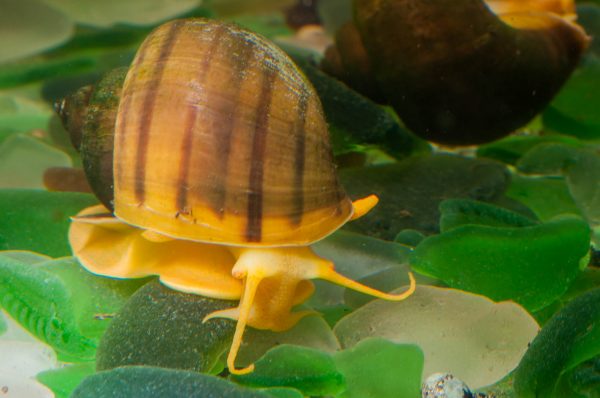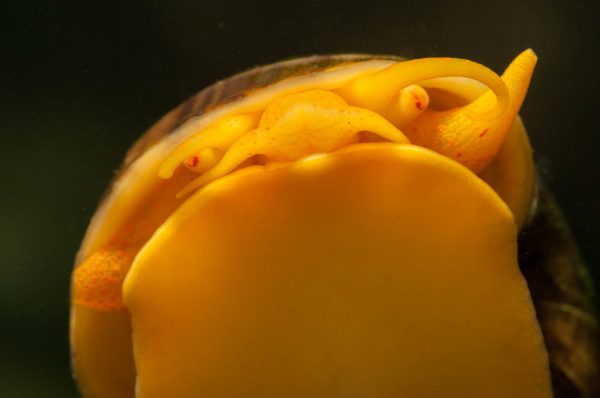
All of the creatures that have found lasting success on St. Martin have some kind of adaptation that makes them suited to life here. Freshwater species have more challenges than most, and the Apple Snail is well equipped to deal with them.

The Apple Snail is a large snail that lives in freshwater habitats. Members of their family live in Africa, Asia and the Americas, so scientists believe they date back to a time when all the continents were joined together. In this hemisphere, most species are native to South America, with a few found just in the Caribbean.
Many of the adaptations of the Apple Snail allow it to survive dry seasons, which happen each year in many tropical areas. Like many snails, they have an operculum—a door to their shell. They can seal it if the pond or stream they live in goes dry. They enter a state known as estivation, resting dormant until rains return.
The Apple Snail is also somewhat amphibious. They have a gill for breathing underwater, and a lung for breathing air. The ability to breathe air allows them to leave the water, at least temporarily, to feed. In stagnant water, they can use the lung to get additional oxygen from the air. They even have a special snorkel that they can extend to breathe air while they are still underwater.

Another benefit of their amphibious nature is the ability to protect their eggs. These snails leave the water, and lay a cluster of eggs above the water line. This protects the eggs from fish and other potential predators.
This variety of adaptations has made the Apple Snail quite successful. They have also made it an unwanted pest in places where it has been introduced accidentally or on purpose. One species—brought to Taiwan as a potential food—ended up seriously harming rice production. Its ability to leave the water to feed makes it a pest for other crops as well.
On St. Martin, this snail can be found in many of the small streams and drainage ditches in Concordia, often using its lung to traverse extremely shallow areas. Plants along the banks of these streams hold egg clusters, looking like pale, misshapen raspberries. The next time you are in the area, keep an eye out for these remarkable snails.
